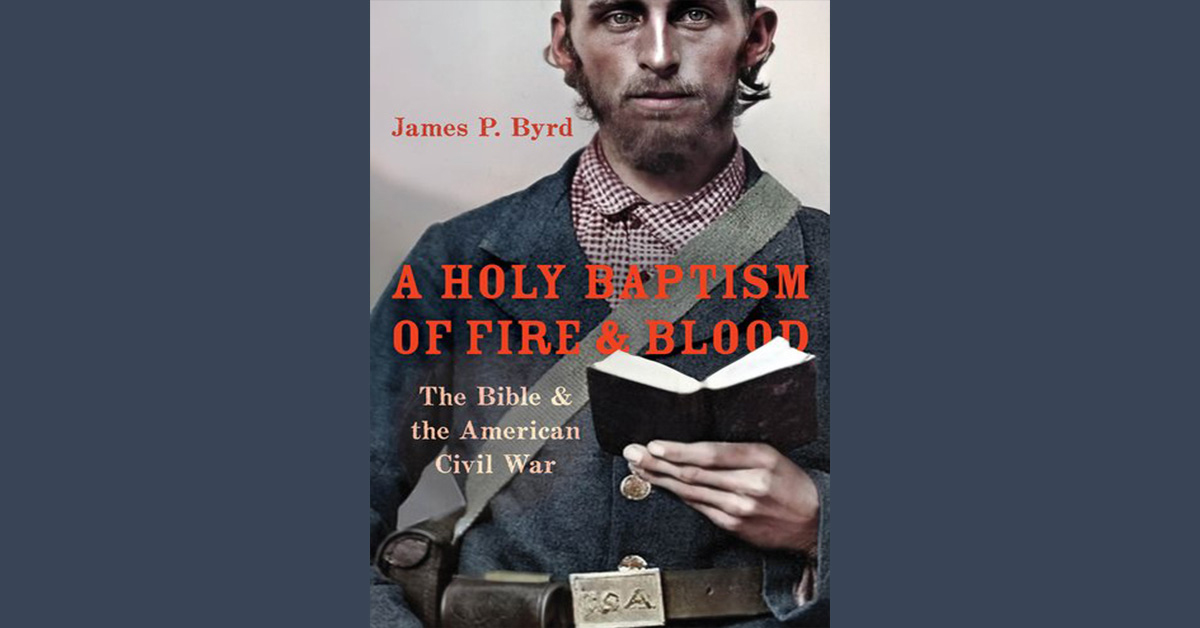Dec 7, 2021 By: yunews

James P. Byrd | Oxford University Press | 2021
Reviewed by Rabbi Dr. Stu Halpern
In his A Holy Baptism of Fire and Blood: The Bible and the American Civil War, James P. Byrd gifts readers with another comprehensively chronicled and extensively analyzed survey of how Americans, in the country's earliest decades, were politically inspired by the Bible. Byrd, a professor of American religious history at Vanderbilt University Divinity School, previously authored Sacred Scripture, Sacred War: The Bible and the American Revolution. In his latest, he offers the first full-length treatment of what Abraham Lincoln meant when, in his Second Inaugural Address, he remarked that both sides of the Civil War "read the same Bible and pray to the same God, and each invokes His aid against the other." As Byrd deftly demonstrates, biblical figures, verses, themes, and scenes were both the theological and political backbone to both North and South. Take, for example, the story of Achan in the book of Joshua. In that tale, Achan is an Israelite who steals property, leading to the collective punishment of his kinsmen by the hands of God in the form of a lost battle. Northern preachers argued that the story demonstrated that the Southern slave owners, like the wicked Achan, claimed possessions that they had no right to and deserved the wrath of God. The Southerners, on the other hand, argued that slave ownership goes unmentioned in the biblical tale, and it was the abolitionists, who were attempting to relieve Southerners of their property, who were being Achan-like, meddling in what did not belong to them. As Byrd notes, citing historian Jill Lepore, wars have "wounds and words," with the latter meant to contextualize and provide meaning behind the former. Put simply, preachers and pundits turned to the Bible to reassure themselves they were right and that God was on their side. Even non-believers turned to the Bible for protection, pocketing miniature versions in their uniforms. This manifold seeking of God's word to enlighten the conflict manifested itself in a startlingly wide range of biblical allusions (quantified using data analysis in the appendix to the book). Frederick Douglass cloaked himself in the words of the ancient biblical prophets, as his biographer David Blight, who Byrd cites, has noted. The influential novel Uncle Tom's Cabin contains over 100 allusions to the Bible. From Samson to Jezebel, Esther to Isaiah, both sides saw themselves as ancient Israel redux. The South saw the North as an oppressive Pharaoh, while the North couldn't stand the South's reliance on slavery, the very thing which God had freed the Israelites from in Egypt. Even the most violent extremists were justifying their actions through a biblical lens. John Brown saw his ill-fated raid on Harper's Ferry as a Samson-like suicide mission, and John Wilkes Booth, Lincoln's assassin, lamented as he fled the authorities that he would be marked with the "curse of Cain." (Sure enough, a Presbyterian minister from Des Moines, Iowa, told his flock that "if Cain deserved to be punished sevenfold, surely [Booth] deserves to be punished seventy and seven fold.") Surprisingly, as Byrd stresses, Lincoln himself possessed no such surety of the righteousness of his cause in the mind of God, and his Second Inaugural is a lesson in political humility and magnanimity. Byrd concludes, "The Bible was a constant in the Civil War, but it was also constantly debated, its meaning shifting with each interpreter to every crisis. Americans were never in more disagreement over the Bible, and yet never more in agreement that the Bible proved the sacredness of war." As his second invaluable contribution to the interpretive history of the Bible in America makes clear, it is Byrd's historically and spiritually attuned gifts that are beyond debate. To read more Straus Center book reviews, click here. You can learn more about the Straus Center and sign up for our newsletter here. Be sure to also like us on Facebook, follow us on Twitter and Instagram and connect with us on LinkedIn.
